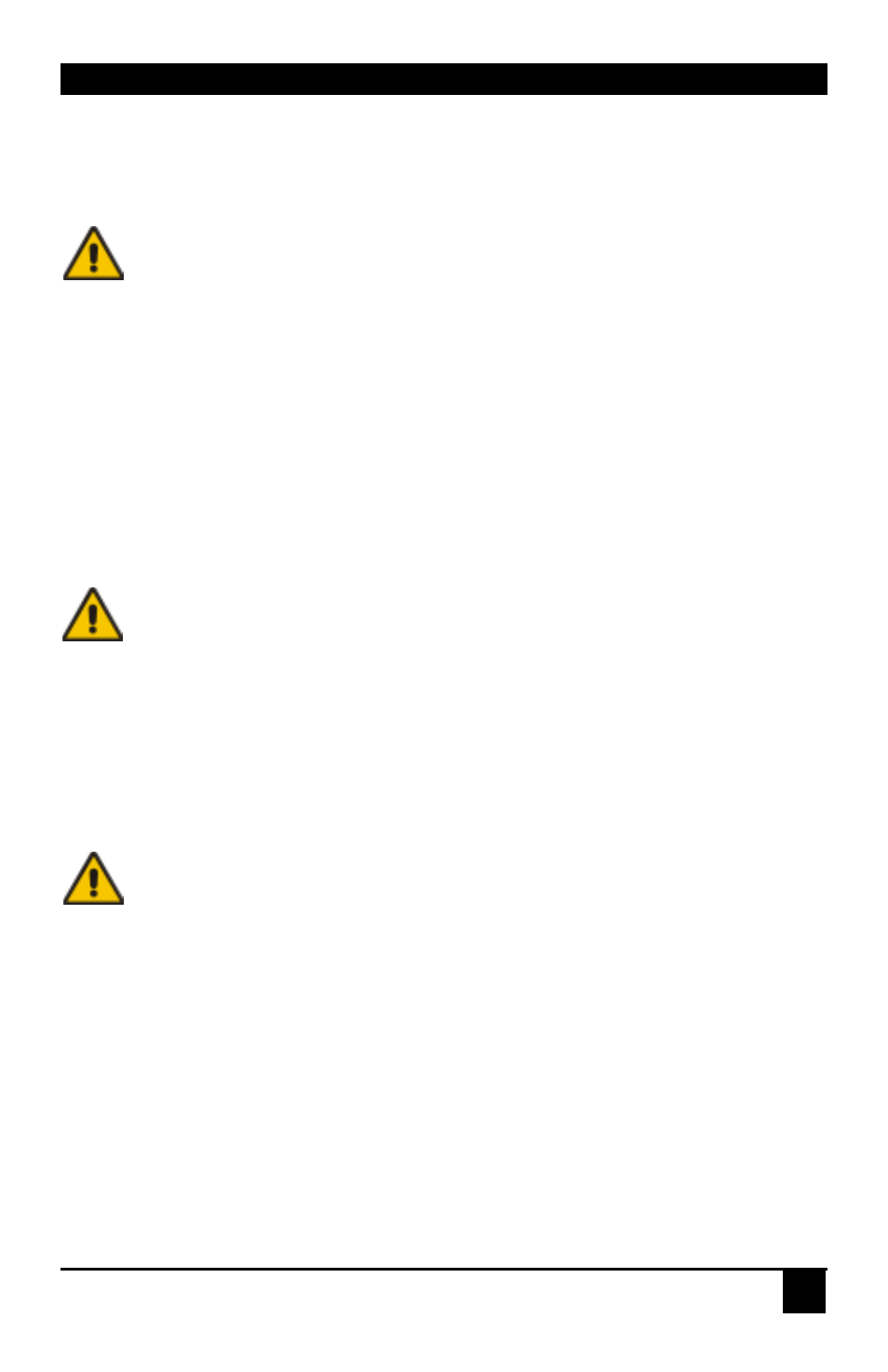Monitor setup – IHSE USA 234 Series VTO2/VRO2 KVM-Extender User Manual
Page 31

MONITOR SETUP
31
VGA in/RGB out
This application uses the extender as a VGA/RGB Converter. The attached monitor must be
able to display an RGB signal with the provided frequencies.
You can only use an RGB Monitor with a VGA-Signal if the
Monitor is able to process the SYNC frequencies (for
example, a monitor with HSYNC = 40-90 kHz may not work
from VGA with 640x480 = 31,5 kHz).
RGB in/RGB out
The attached monitor must be able to display an RGB signal with the provided frequencies. In
this mode, it might be necessary to switch off the automatic gain control (AGC) if your
monitor does not blank the ‘white pulse’.
RGB in/VGA out – SYNC Stripper
In this mode, the remote unit works as an additional SYNC stripper – the SYNC signals are
stripped off from green, separated and presented as TTL-signals.
Depending on the technical design of the units, you receive
at HSYNC-output a CSYNC signal (HSYNC and VSYNC mixed)
and at the VSYNC-output a VSYNC-signal. Some types of
VGA-monitors show distorted pictures, while receiving both
CSYNC on HS and an additional VSYNC on VSYNC.
If you have a monitor that shows distorted pictures in this configuration, you can suppress the
VSYNC -signal by removing jumper JP9 on the Remote unit (VRO). All monitors that show
distorted pictures, because of this double signal, work well with a pure composite-signal
(VSYNC disconnected).
A VGA-monitor only works as an RGB graphic adapter if the
monitor is able to process the synchronization frequency of
the video source (e.g. a multi sync-monitor with horizontal
bandwidth of 30-90 kHz may not work with a WF470 graphic
adapter with 15.625 kHz).
It is not possible to generate the special phase relations (of the VGA-standard) that are
required by some types of dual scan monitors (LCD-panels, for example). In this mode, you
may have to switch off AGC if your monitor does not blank out the WRI (White Reference
Impulse) and shows it on screen.
RGB signals have a lot of different types of signal forms and combinations. For further
information please contact our Technical Support. We will help you to find a solution for
your application.
